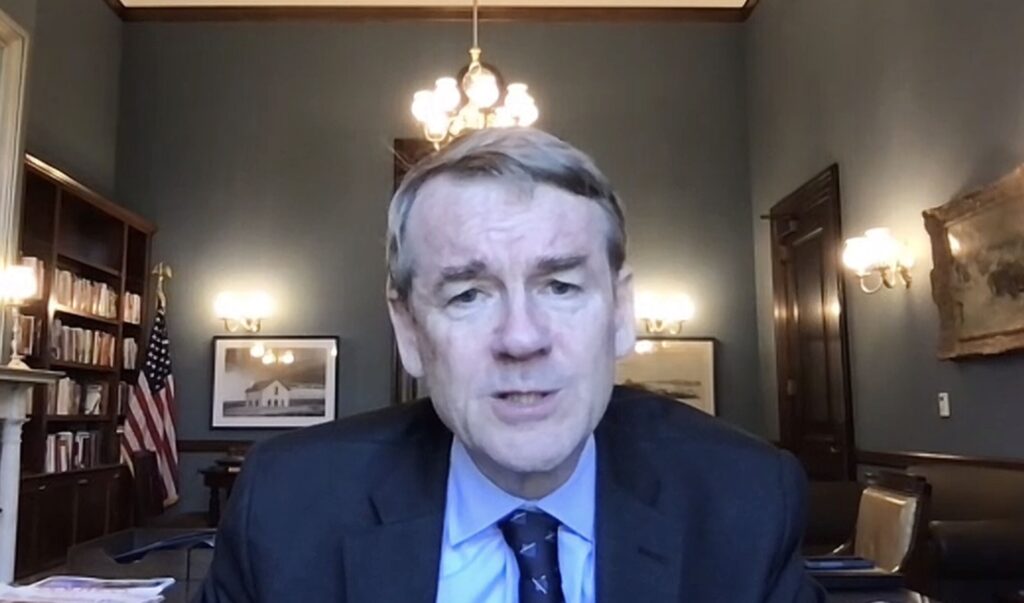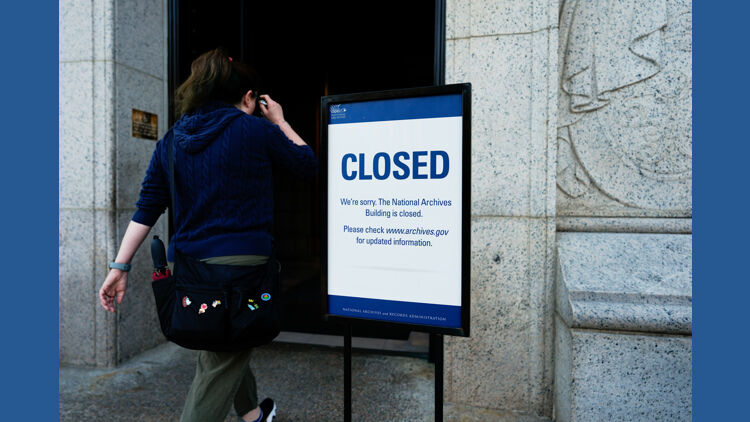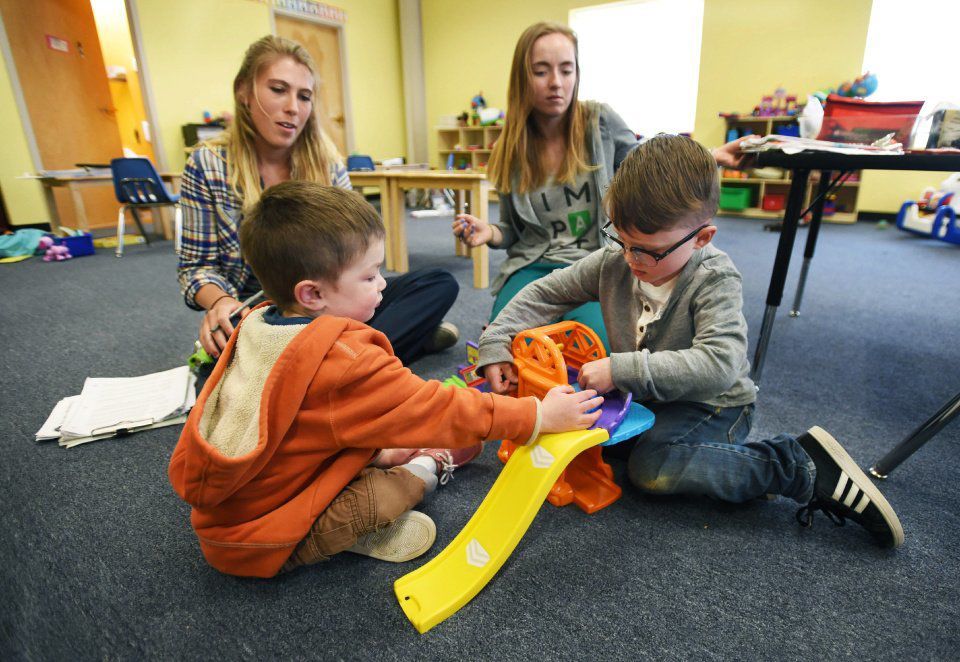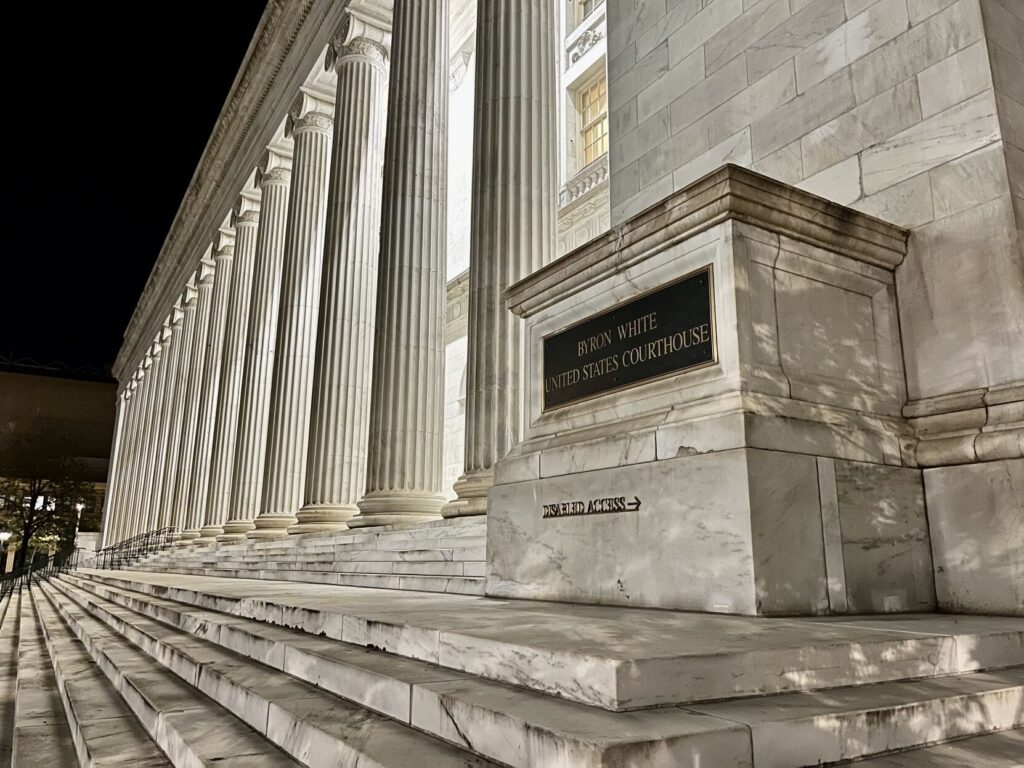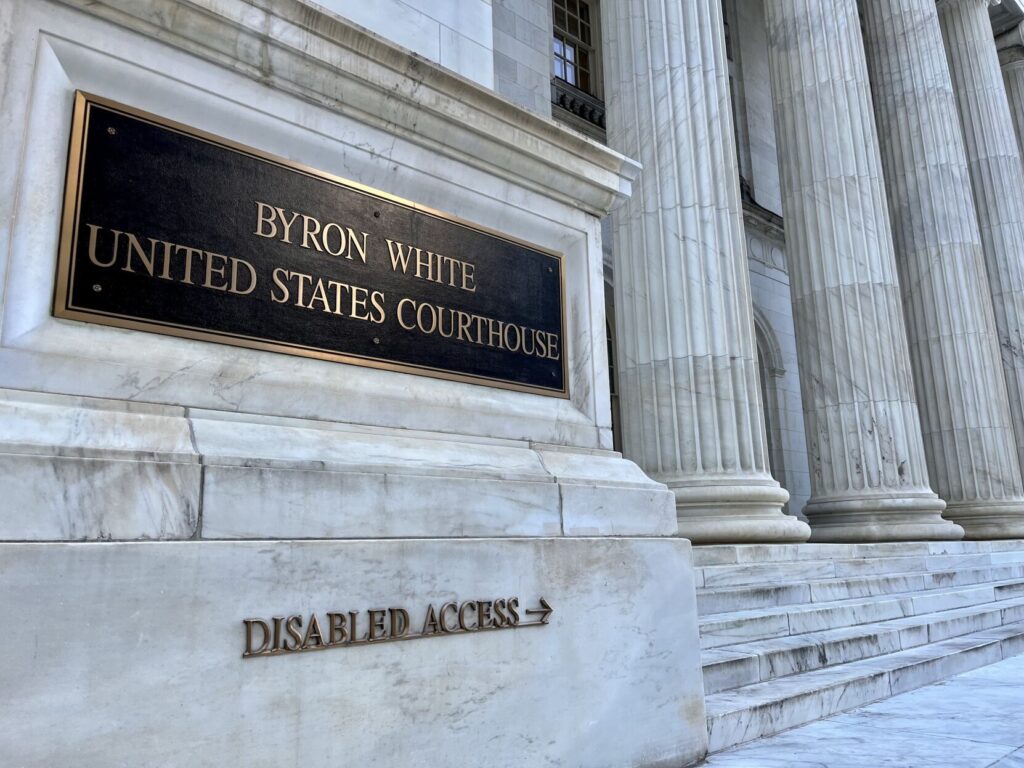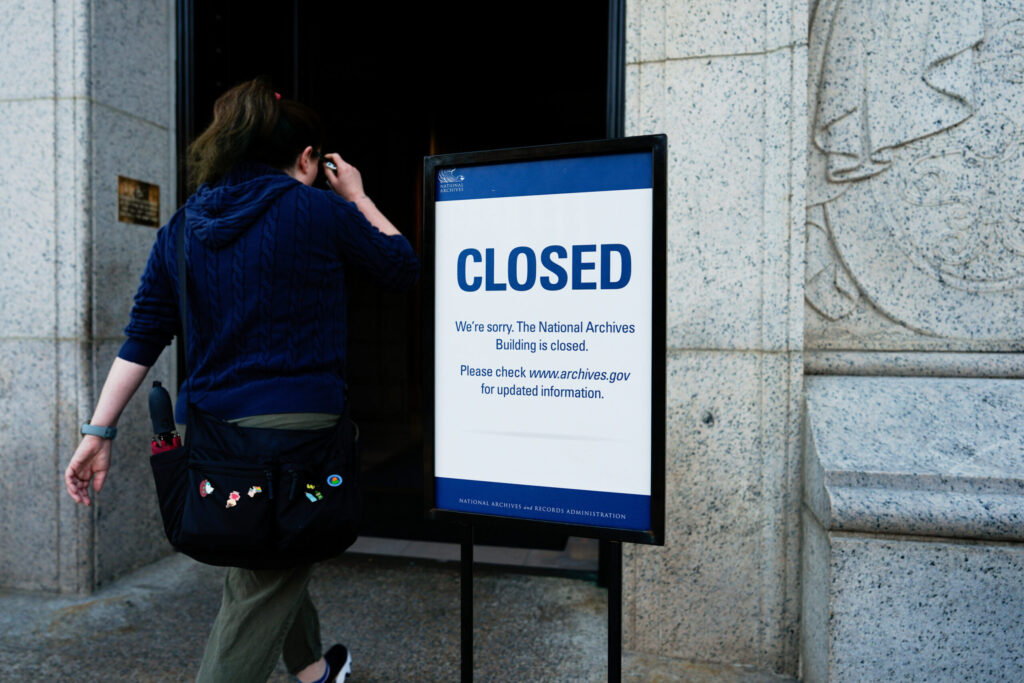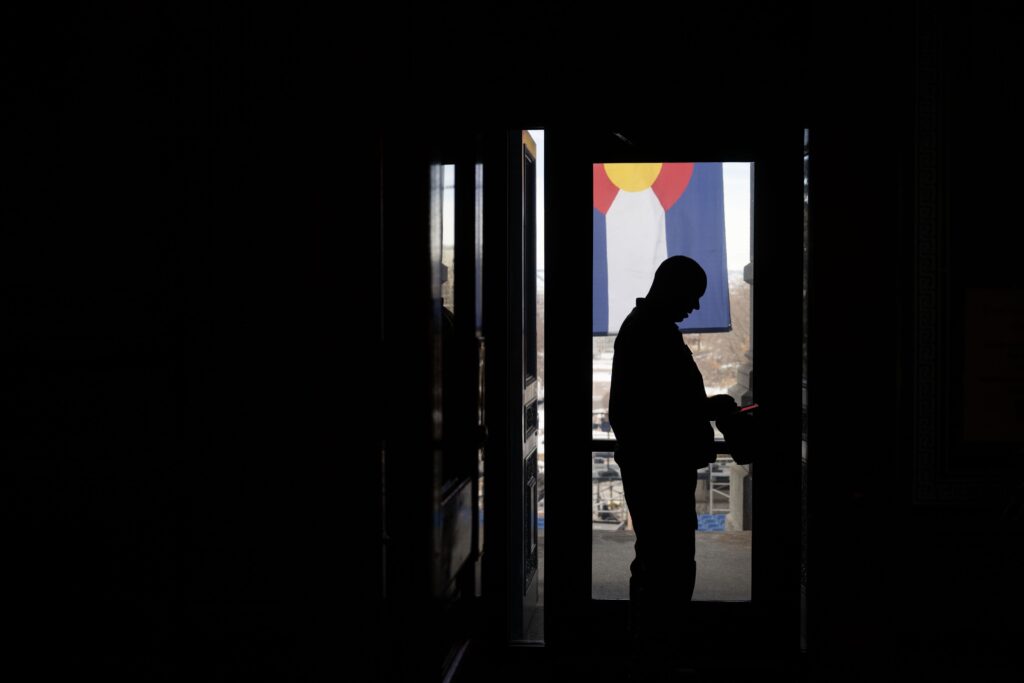Q&A with Tim Jackson: ‘America’s love affair with the car continues to thrive’

Tim Jackson isn’t just another trade association rep who does standup for his industry, puts in long hours at the State Capitol and hobnobs in political circles. Sure, he does all that and more as the longtime president of the low-key but highly influential Colorado Automobile Dealers Association. But as we were reminded in this week’s Q&A, Jackson also has a superpower: He can peer into the future. At least, as far as the automobile is concerned. And the perspective he offers on that subject is both “amazing” – that’s how he describes the outlook for self-driving vehicles – and thought-provoking.
Of course, that perspective is coming from a guy who’s a lot more than a salesman for his members; he’s a longtime presence in state politics and policy making, and his work includes digging deep into perennially heavy issues like taxation and regulation. And especially transportation – because, as he puts it, cars are always going to need “lanes to travel in and places to park.” Jackson offers insights on that and more; read on.
Colorado Politics: You’ve been the wheelman of the auto dealers for a long time – since 2004 – and before that you were Colorado’s official voice of small business at the state’s chapter of the NFIB. Underlying it all, you’ve fundamentally been an advocate for free enterprise. Do you see that as your broader mission? Does such a traditionally Republican priority make it challenging to build bipartisan coalitions at the Capitol?
Tim Jackson: Free enterprise is the backbone that has, over the years, built this outstanding nation. I’ve been fortunate to represent small business owners who place faith and investment in free enterprise. They are risk takers, capitalists, entrepreneurs, investors, economic drivers in their communities and are passionate and driven to succeed. I’ve always been impressed by their ability to effectively interact and communicate with people from all stripes and backgrounds. They are genuine and grounded. Their message is compelling and non-partisan. Coalitions have never been hard to build.
CP: What’s CADA’s take on the recently enacted federal tax reform?
Jackson: There were lots of risks at play during the debate and passage of the federal tax bill. Simplification is needed and will, one day, prevail. Yet the recent tax bill, on balance, was important for predictability, investment, economic growth and long-term sustainable vitality. Very recent polling shows that more than half of Americans now favorably view the tax bill. The tax bill has become much more popular today than it was the day Congress enacted it.
Tim Jackson
CP: In a column on Earth Day for the Colorado Statesman a few years ago, you noted how the U.S. population, energy consumption and travel by car all had increased dramatically nationwide since 1970, yet a range of pivotal pollutants – including carbon monoxide, ozone and sulfur dioxide – had all been cut just as dramatically in that time. You also contended that your industry is helping blaze trails toward a broader energy portfolio that includes flex fuel and electricity. Is the automobile unfairly maligned?
Jackson: Today’s new cars are more than 99 percent cleaner than vehicles of the 1970s. That’s one reason why the nation’s air has become much cleaner, even as the number of miles driven has doubled. New car dealers know that they’re part of the solution, not a part of the problem. And we realized that the benefits of these super-clean new cars are offset by the old, high-polluting cars. In fact, a very small percentage of these vehicles produce more than half of Denver’s air pollution. So we launched the Clear the Air Foundation to accept donations of trade-in vehicles dealers receive. Rather than selling them and putting them back on the roads, this nonprofit recycles the old vehicles so they never pollute again. New car dealers have taken nearly 3,200 high-polluting vehicles off the road so far, and average about 600 vehicle donations a year. While electric vehicles are an exciting part of the new car mix, most still drive gas-powered vehicles, so the environmental strides these vehicles have made are extra impactful.
CP: Urban planners have been putting the pinch on parking – and by extension, personal cars and trucks – in favor of mass transit in metro areas like Denver’s. Will they ever snuff out America’s enduring love affair with the automobile? What does the future of motor vehicles, and humans’ relationship to them, look like?
Jackson: America’s love affair with the car continues to thrive. There are nearly as many registered vehicles in the U.S. as there are people. Here in Colorado, there are more registered cars on our roads (5.98 million) than there are people (5.6 million). Yet some urban planners, bureaucrats and other policymakers are making it harder to travel in personal transportation. Main thoroughfare lanes are being taken away for bicycles, transit and High Occupancy Vehicles (HOV). Construction requirements for parking are being relaxed and, generally, government is making it harder for people to commute to work or for family needs in their cars. Additionally, transportation funding is not keeping up with demand for lanes, expansion or improvement. As motor vehicles move toward electrification, fees paid to the Highway Users Trust Fund decline, even as demand for that revenue increases. From a policy standpoint, we have to rethink how roads are paid for, as well as how to increase and improve their development. As planners try to push people from privately owned mobility, they will have to look at lost income from sales tax, fuel tax, ownership fees and license fees. Up to 22 percent of local and state revenues are generated from the sale and service of new and used cars. It’s the elephant in the room when it comes to government funding. Adding to sales taxes won’t be popular with voters, because they are already extremely high in many jurisdictions. Instead, some form of user-pay system needs to be advanced that can factor in vehicles miles traveled (VMT) regardless of the vehicle’s power source. Additionally, planners need to consider drivers’ commuting preferences. It doesn’t make sense to lock cars out of lanes when the transportation modes the cars are replaced with carry less than one percent of the total volume number of people transported in cars.
…(W)e have to rethink how roads are paid for, as well as how to increase and improve their development.
CP: What more will have to happen to the regulatory landscape to accommodate self-driving “autonomous” vehicles?
Jackson: Autonomous cars are fast approaching. They will be amazing and incredibly proficient. In fact, new cars get more autonomous every year. New cars in dealer showrooms practically drive themselves. Many new cars now feature lane departure warnings, crash avoidance warnings and adaptive cruise control and will park themselves or can be called up from remote parking to board. Worldwide, hundreds of billions of dollars are being invested in fully autonomous cars. They will change the way we think about mobility and will offer many new challenges, as well as opportunities. As for regulatory landscape changes, policymakers have already showed their willingness to move mountains to advance driverless cars. We also are seeing many miss the mark in citing needs for full autonomy. For example, some cite the need for dedicated autonomous car lanes. If these cars can do anything, they will be able to share lanes with driven cars. Dedicating lanes for autonomy will shortchange much of the promise and advantages to that type of technology rollout. Additionally, anyone who thinks that parking needs are eliminated due to autonomous cars has missed the point of this evolution. Just like driven cars, whether in fleets or private ownership usage, autonomous cars will need lanes to travel in and places to park. Even as overall vehicle-miles-traveled (VMTs) tallies grow each year, with autonomous cars, they will literally skyrocket. Traffic congestion we see today will pale by comparison to traffic congestion in our future. That creates all the more reason to get ahead of the transportation funding issues of today and start planning for those of tomorrow. Both privately owned and driven cars, as well as fleet and autonomous cars, necessitate it.
CP: Coloradans at last can buy a full-strength beer on Sundays – but not a new car from a dealership. Why does the law still keep dealerships closed? Will that ever change?
Jackson: Many new car dealerships are open for business up to 84 hours each week and staff their stores even more hours than that. And their websites are operating 24-7-365. Consumer experience continues to evolve and improve. Yet both consumers and dealers appreciate having sales-free Sundays wherein new car shoppers can browse lots, kick tires, access inventory and dream dreams without interference by someone wanting a signature on the bottom line. There is very little push by consumers to eliminate that sales-free Sunday experience and literally none from licensed car dealers. As far as we see, Sundays will stay car-buying free for years to come. If the ban on Sunday sales is eliminated, costs would increase for cars, parts and service. In our very consumer-competitive and cost-free world, it doesn’t make sense to add on to the already expensive car purchase even while eliminating that sales-free Sunday experience.
CP: You spend your working hours advocating for motor-powered four-wheelers, but you also log a lot of miles pedaling on two. A lot of Coloradans love to bike, but will bicycling ever become an important part of the urban commuting mix, as some advocate?
Jackson: Many Coloradans love to cycle for fun and fitness. A lot of new car dealers fall into that category and I certainly do myself. Many new car dealerships and dealer groups sponsor cycling teams and/or participate in cycling events. Many “car people” also are “cycle people.” There are avid cyclists in Colorado and elsewhere who commute by bike and probably reduce the number of miles traveled by car as a result. That’s fine; it is not for everyone, and we are not a year-round cycling state due to climate and terrain. I think the extent to which we accommodate mobility in general, from a policy standpoint, we actually benefit both cycling and vehicular mobility. That is the position from which we operate. There is plenty of room for advocacy on the part of mobility by cars and bicycles. We will do our part to promote mobility in general, as it is changing rapidly and …we haven’t seen anything yet!




